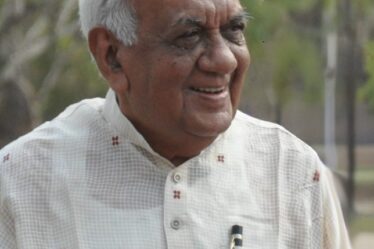In the corridors of our hospital, a remarkable story unfolded just a day ago. A woman well into her nineties, her spirit worn by time but her resolve firm. Hailing from a village 200 kilometers east of Sevagram, she lived out her days in the company of memories and her devoted son after the loss of her husband.
But fate had other plans. Liver cancer brought her to our doors. An orange-sized tumor, an unwelcome intruder, had made its home not just in her liver but had spread its tendrils into her lungs and beyond. Despite our best efforts, we knew her time was short. Medicine could not offer salvation; surgery could not mend what was broken.
Two nights under our care, and her body began to betray her. Organs failed, each one surrendering to the inevitable until her heart, too, fell silent. Beside her, her three sons, all in their sixties, bore witness to her final moments.
Yet, amidst the sorrow, a profound exchange occurred. A day before, a team of medical students, granted permission by her son, surrounded her. With reverence and curiosity, they took her medical history, seeking answers to the fundamental questions of What, When, Where, Why, and How long. What they found surprised them—a firm mass where there should have been softness, fluid where there should have been none. In her, they saw not just a patient, but a source of knowledge, a proof to the complexities of the human body.
“We learned so much from her,” one student remarked, “knowledge that will guide us as we spend more time in the medical and surgical wards of the hospital.” For them, it was more than a bedside visit; it was a lesson in empathy, in the fragility of life.
Hours later, tradition collided with revolution. Instead of the customary rituals, her sons, spurred by admiration for the students and a sense of duty, chose a different path. They decided to donate their mother’s body to the Anatomy department, where it would become a tool for learning, a vessel of discovery for future generations.
“What led you to this decision?” I inquired as I visited the family in their home in Sevagram. Their answer was simple yet profound. They recounted the influence of Dr Khandekar, a respected Physics professor from the Institute of Science Nagpur, who, even in death, continued to impart wisdom by willing his body for donation at the ripe age of 102. They spoke of duty, of legacy, of honoring a life well-lived.
And so, in death, she found immortality—not in the flames of a funeral pyre, but in the hearts of those she left behind and in the minds of the students who would carry her legacy forward.

